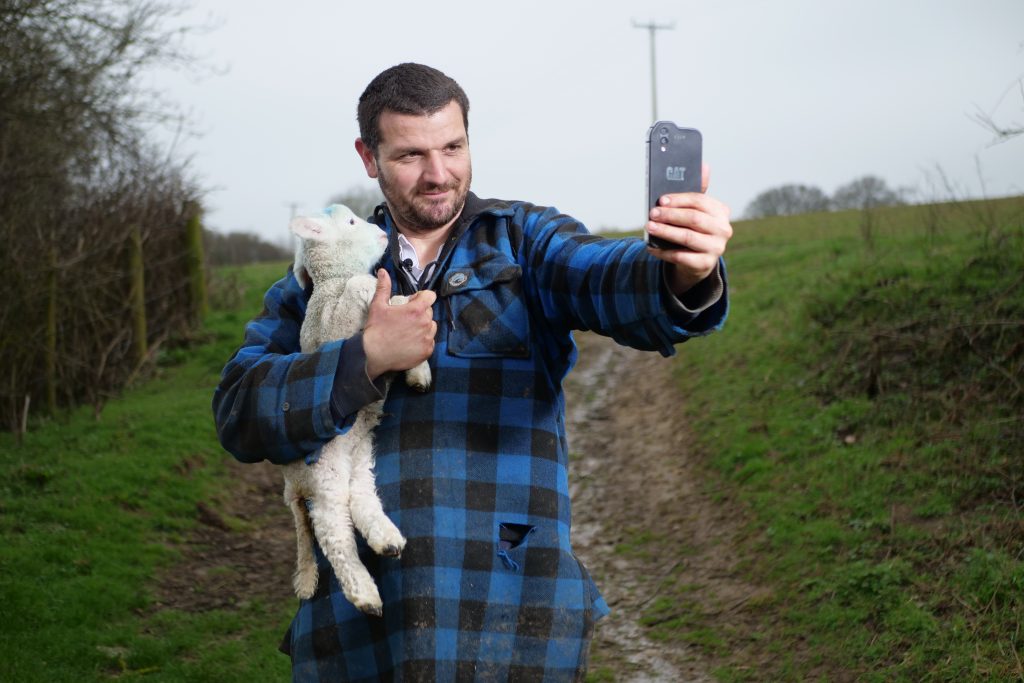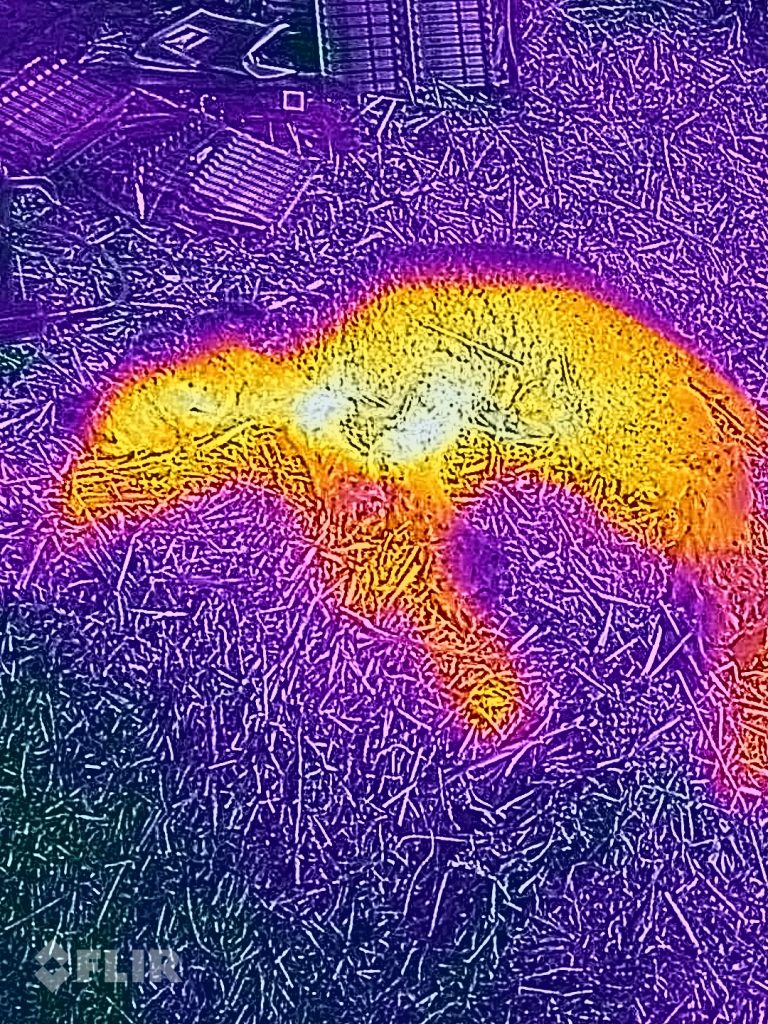Thermal imaging phone takes heat out of lost livestock
27th April 2018
Farmers faced with the daily battle to reduce livestock losses are being helped by advances in mobile technology, including thermal imaging, now embedded in a smartphone from Caterpillar.

Rob Hodgkins, who owns and runs the 1,700-acre Cherry Farm in Stevenage, Hertfordshire.
Farmers faced with the daily battle to reduce livestock losses are being helped by advances in mobile technology, including thermal imaging, now embedded in a smartphone from Caterpillar.
Instant access to thermal imaging via the mobile in your pocket enables farmers to operate more efficiently with new ways to improve animal health. In a profession increasingly dominated by technology, it’s a tool that helps farmers to monitor their livestock and land, even working in total darkness to help detect predators at night.
An average of 15 per cent of lambs are lost on British farms each year due to predators, hypothermia and other health complications.
For many, reducing such losses has traditionally been a huge challenge, but thanks to the use of thermal imaging technology, now available and affordable in a Cat smartphone, all this is changing.
Sheep and arable farmer Rob Hodgkins, who owns and runs the 1,700-acre Cherry Farm in Stevenage, Hertfordshire with his wife Jo, is one of the many farmers embracing technology to find new ways to improve efficiency and farm returns.
He uses the rugged Cat S60 smartphone, with a built-in thermal imaging camera, which he says has revolutionised the monitoring of his flock of 1,500 ewes and their offspring.
Rob’s story features in a short film about recent developments in farming made by Bullitt Group, the developers of Cat phones. During the shoot, he was alerted via his local farmer WhatsApp group of a dog bothering the sheep and discovered a lamb had become separated from its mother at night, a scenario that could quickly lead to the death of the vulnerable new-born.
Using the thermal camera on his phone to scan the area, footage shows the tiny creature clearly visible on its display as Rob searches in complete darkness.
Searching with the thermal imaging capabilities of his smartphone enabled Rob to locate the missing lamb at night without disturbing the flock or relying on headlights and heavy machinery. Using just his Cat S60 phone he could scan the countryside by night and locate the lamb caught in some brambles.
Taken into the “orphanage”, the lamb’s temperature was checked and the thermal camera revealed it to be in the early stages of hypothermia. This instant insight and diagnosis enabled Rob to act fast, preparing a direct glucose injection. He then used the camera again to check the formulation was at the correct body temperature for the lamb.

Taken into the “orphanage”, the lamb’s temperature was checked and the thermal camera revealed it to be in the early stages of hypothermia.
Once treated, the lamb was kept indoors overnight; Rob was then able to successfully reunite it with its mother the following morning. He said: “Technology is changing farming in a massive way. Thermal imaging technology – which a few years ago would have cost thousands of pounds – is now just in my pocket.”
Predation is an ongoing issue for Rob, who says, “Sometimes it feels like everything in the countryside is trying to eat my lambs. We have foxes, badgers, seagulls, crows and magpies.” In a good season a combination of factors mean Rob loses 5-8% of his crop (200 lambs), but in a bad season it is closer to 12-15% (350 lambs).
This new technology brings the traditional practice of farming into the 21st century in an affordable way, enabling Rob to monitor the health of his crop as well as the land on which they graze.
The rugged smartphone’s ability to measure temperature means that Rob can also check the ground temperature to gauge the timing of grass growth following frost, as well as monitoring sheep’s droppings for worm eggs.
Working in collaboration with a laboratory in New Zealand, Rob sends dropping samples to the lab for analysis which then informs his use of antibiotics and anti-worming medication. In order for the results to be accurate, the dropping samples must be fresh – with his Cat S60 phone, Rob can quickly scan the field to locate the most recent sample.
During filming Rob was also testing the Cat S61: the next generation Cat phone to be released later this year with enhanced thermal imaging quality and temperature range plus other built-in tools including laser-assisted distance measuring, and an indoor air quality monitor.
The film can be viewed here: https://www.youtube.com/watch?v=VQ7IlhBpSkU
